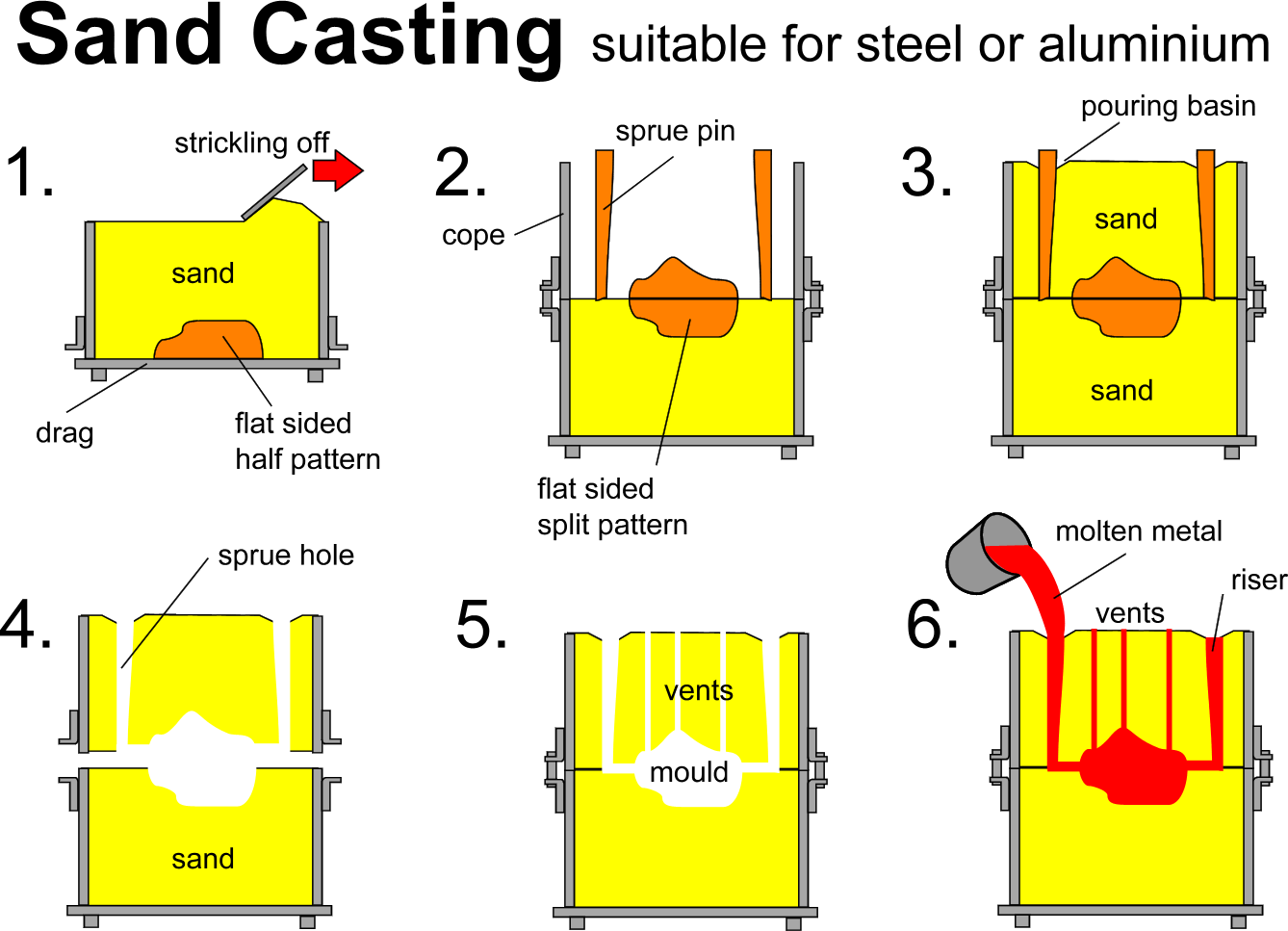This involves packing a moulding material (traditionally
a mixture of sand and clay) around a pattern of the casting. This is
usually made of a hardwood and will be larger than the requirements
of the finished casting to allow for shrinkage. The mould is then split
so that the pattern can be removed.
Advantages
This process can be used for a large range of sizes and for small or
large production runs. It is the cheapest casting process available
for small production runs and can sometimes be economical for large
production runs.
Disadvantages
The surface finish and tolerances of the finished casting are poor.
This form of casting can significantly alter the mechanical properties
of the material being cast. The time required to cast a components can
be excessive due to the need to allow the casting to cool before removing
it from the mould.
|


